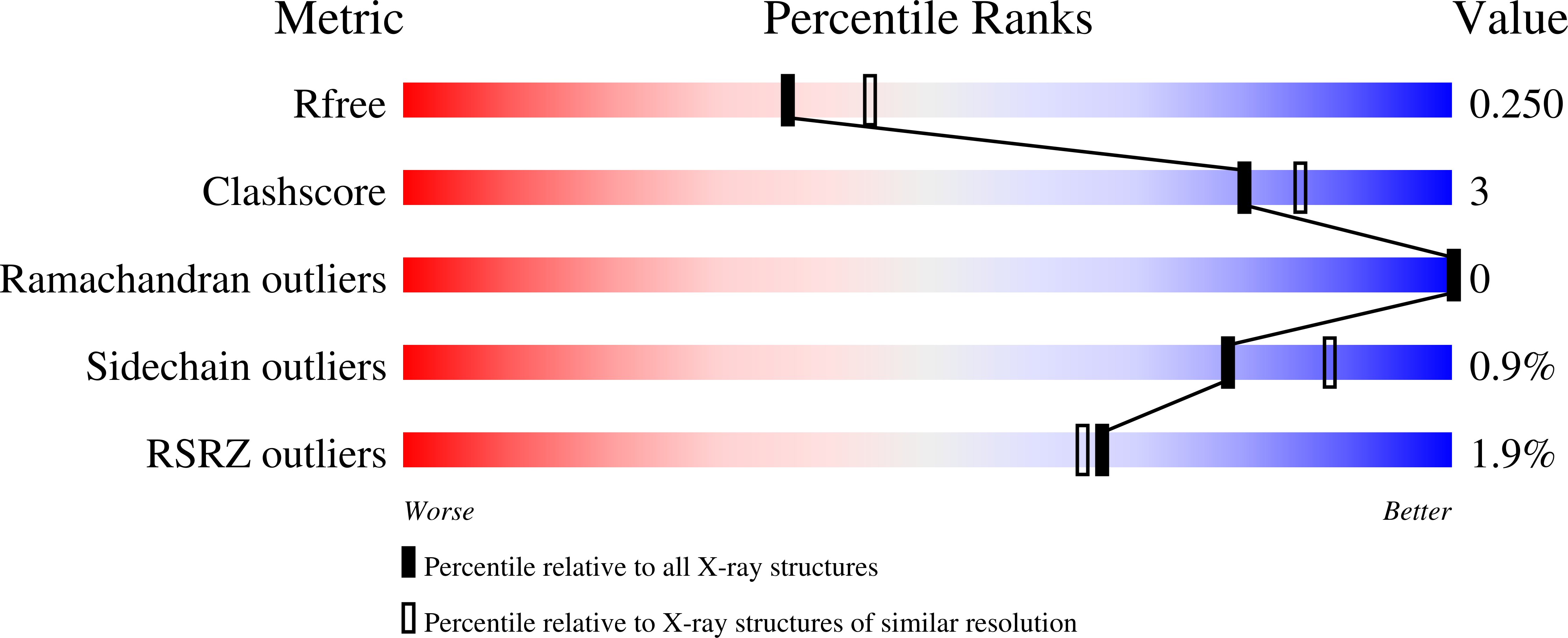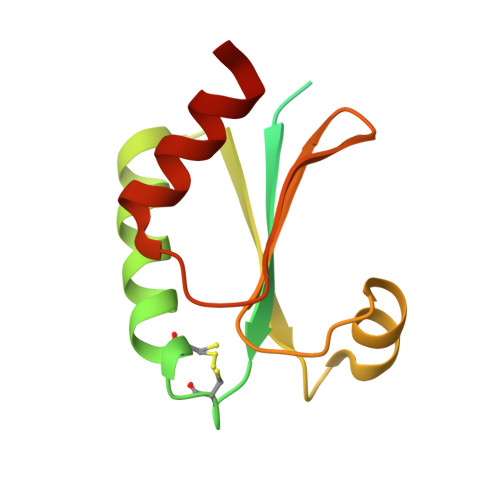Crystal structure and solution characterization of the thioredoxin-2 from Plasmodium falciparum, a constituent of an essential parasitic protein export complex.
Peng, M., Cascio, D., Egea, P.F.(2015) Biochem Biophys Res Commun 456: 403-409
- PubMed: 25475729
- DOI: https://doi.org/10.1016/j.bbrc.2014.11.096
- Primary Citation of Related Structures:
4O32 - PubMed Abstract:
Survival of the malaria parasite Plasmodium falciparum when it infects red blood cells depends upon its ability to export hundreds of its proteins beyond an encasing vacuole. Protein export is mediated by a parasite-derived protein complex, the Plasmodium translocon of exported proteins (PTEX), and requires unfolding of the different cargos prior to their translocation across the vacuolar membrane. Unfolding is performed by the AAA+protein unfoldase HSP101/ClpB2 and the thioredoxin-2 enzyme (TRX2). Protein trafficking is dramatically impaired in parasites with defective HSP101 or lacking TRX2. These two PTEX subunits drive export and are targets for the design of a novel class of antimalarials: protein export inhibitors. To rationalize inhibitor design, we solved the crystal structure of Pfal-TRX2 at 2.2-Å resolution. Within the asymmetric unit, the three different copies of this protein disulfide reductase sample its two redox catalytic states. Size exclusion chromatography and small-angle X-ray scattering (SAXS) analyses demonstrate that Pfal-TRX2 is monomeric in solution. A non-conserved N-terminal extension precedes the canonical thioredoxin-fold; although it is not observed in our structure, our solution analysis suggests it is flexible in contrast to Plasmodium thioredoxin-1. This represents a first step towards the reconstitution of the entire PTEX for mechanistic and structural studies.
Organizational Affiliation:
Department of Biological Chemistry, David Geffen School of Medicine, UCLA, Los Angeles, USA.















